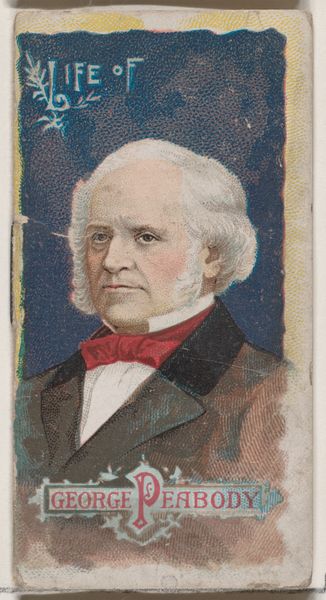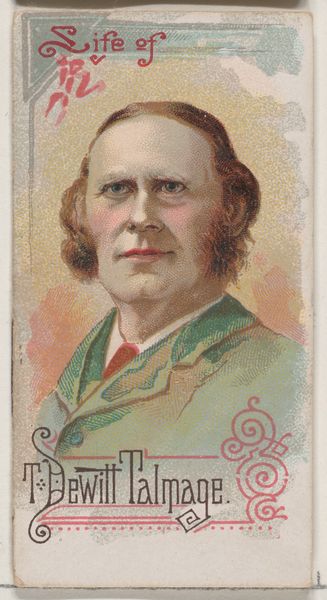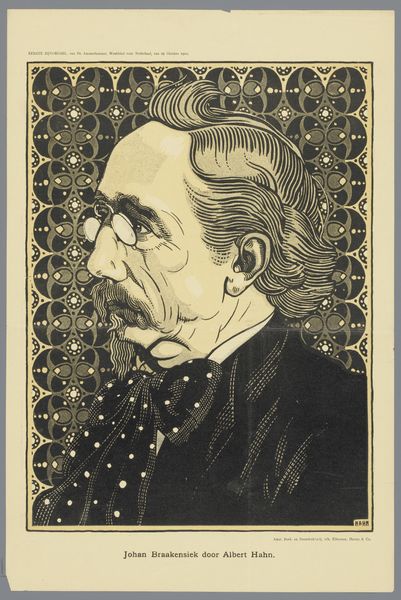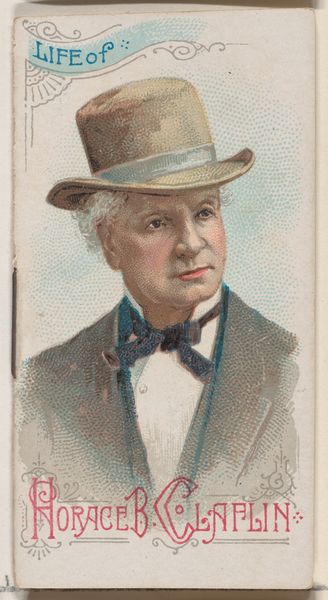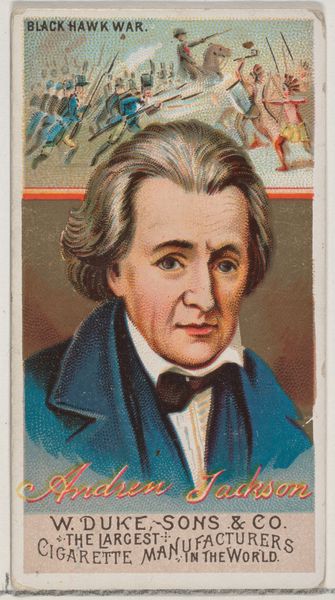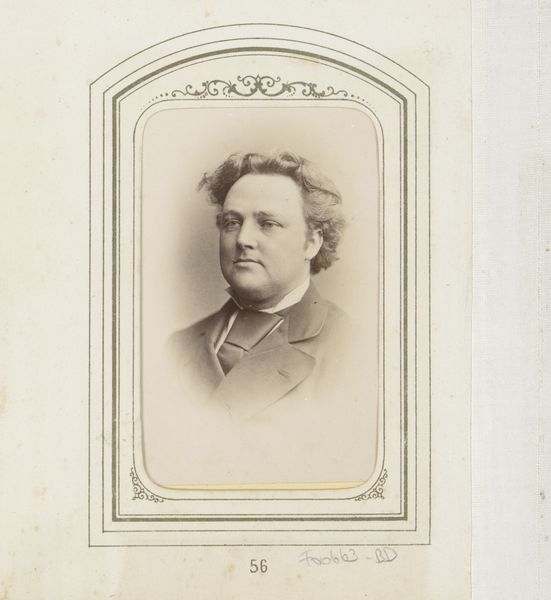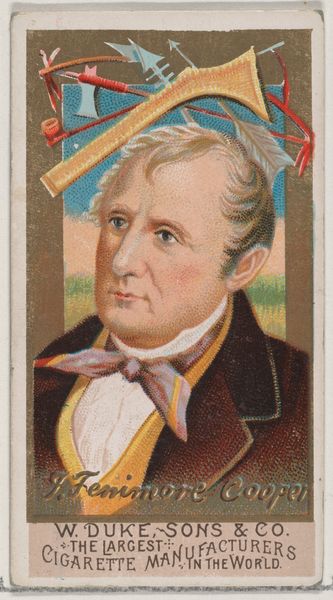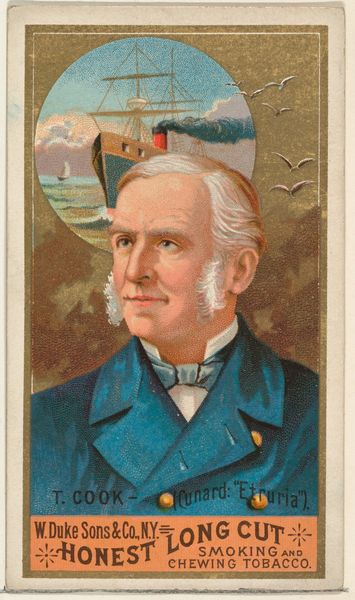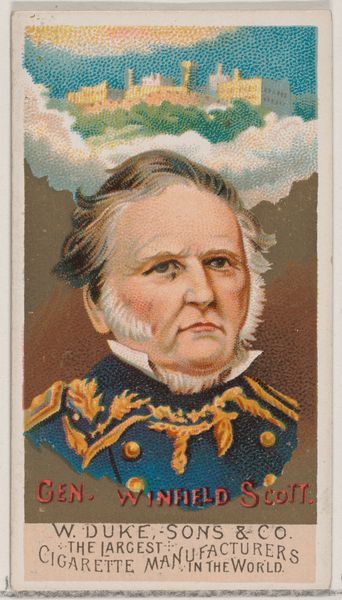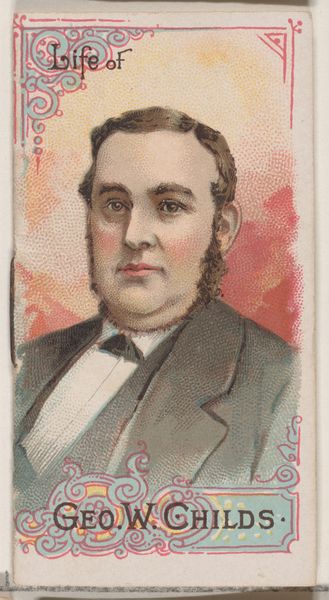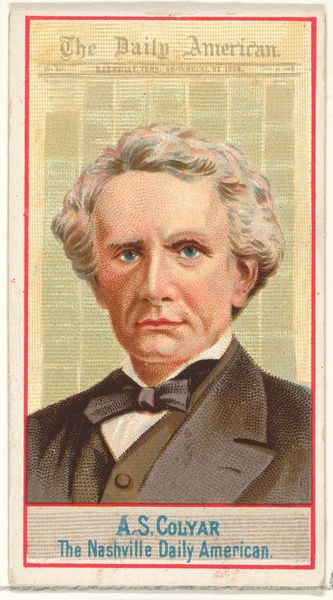
Life of Professor Thomas Henry Huxley, , from the Histories of Poor Boys and Famous People series of booklets (N79) for Duke brand cigarettes 1888
0:00
0:00
drawing, coloured-pencil, print
#
portrait
#
drawing
#
coloured-pencil
# print
#
coloured pencil
Dimensions: Overall (Booklet closed): 2 3/4 × 1 1/2 in. (7 × 3.8 cm) Overall (Booklet open): 2 3/4 × 2 7/8 in. (7 × 7.3 cm)
Copyright: Public Domain
Curator: This piece presents a portrait of Thomas Henry Huxley, rendered as a coloured pencil print, dating back to 1888. It's part of the "Histories of Poor Boys and Famous People" series, a promotional booklet by W. Duke, Sons & Co. for their Duke brand cigarettes. Editor: The first thing that strikes me is the blend of formality and folksiness. The composition is straightforward, the professor's attire rather prim, and the color palette imparts a quaint, almost innocent feeling. Curator: Precisely. And let’s consider the context: cigarette cards. Tobacco companies employed these collectible cards as marketing tools, often depicting idealized figures of success, effectively equating achievement with smoking, all whilst promoting toxic carcinogens. The narratives implicitly celebrated a very specific kind of upward mobility linked directly to late-stage capitalism. Editor: Absolutely. And in terms of iconography, Professor Huxley is presented as a kind of sage. Note the carefully groomed side-whiskers, the composed demeanor – these speak of intellect, respectability, and Victorian-era values. This imagery aimed at shaping cultural perceptions surrounding success and virtue. Curator: That’s spot-on. The booklet's larger message likely aimed at attracting a working-class male demographic—the "poor boy" aspiring to fame, all implicitly tied to notions of class, race, and patriarchal ideals so ubiquitous during the time. One must also ponder whether his scientific position impacted this advertisement and how society saw this figure's endorsement and participation. Editor: Definitely, this cigarette card provides so many lenses to see social mobility in the Victorian era. Huxley is almost allegorical here, beyond merely being an individual; rather a symbol. The visual codes used to frame this 'self-made' narrative invite viewers to consider these symbols as guides in their own self-fashioning and achievement. Curator: I think that your highlighting the interplay of symbols alongside the artwork’s societal position greatly enhances our grasp on both the portrait and its intended audience, and how that kind of symbolic marketing persists today. Editor: I agree. I find that exploring the symbol systems help us grasp deeper cultural meanings woven into a seemingly simple piece.
Comments
No comments
Be the first to comment and join the conversation on the ultimate creative platform.

